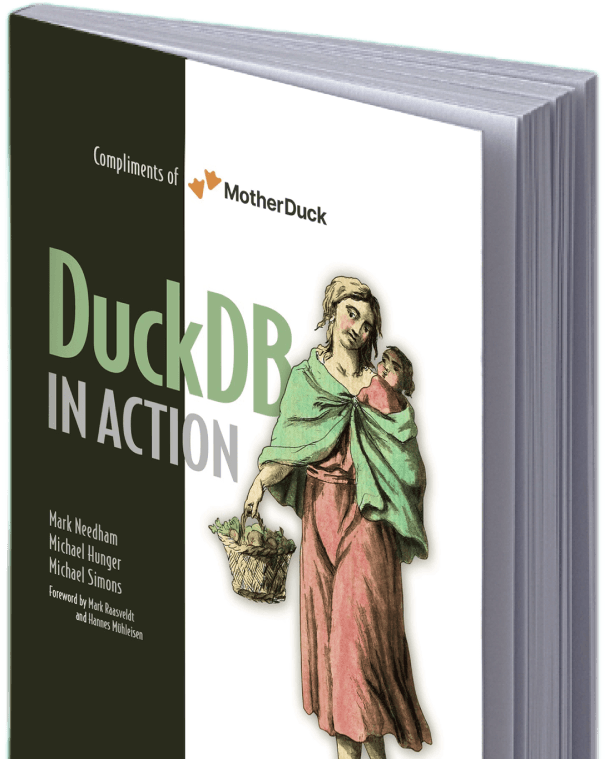3 min read
Getting Started with DuckDB
This is a summary of a book chapter from DuckDB in Action, published by Manning. Download the complete book for free to read the complete chapter.

2.3 Using the DuckDB CLI
Launching the DuckDB CLI is incredibly simple, requiring just the execution of the 'duckdb' command. This initiates DuckDB and presents the user with the CLI prompt, ready to accept commands. By default, the database operates in transient mode, storing all data in memory, which is lost upon exiting the CLI using '.quit' or '.exit'.

The CLI efficiently handles SQL statements, executing them upon encountering a semicolon and a newline. It provides flexibility by allowing multi-line input for longer statements and offers various output formats to suit different needs. Additionally, the CLI supports special dot commands for tasks like opening files, reading SQL scripts, listing tables, and controlling output settings.
2.4 DuckDB’s extension system
DuckDB's extension system expands its core functionality by providing modular packages that can be easily installed and managed. These extensions encompass features not included in the core database, allowing users to tailor DuckDB to their specific requirements. DuckDB comes bundled with several pre-loaded extensions, which may vary depending on the distribution.
The duckdb_extensions function provides a comprehensive list of available extensions, indicating their installation and loading status.
Installing an extension is as simple as using the INSTALL command followed by the extension name. Once installed, an extension can be loaded using the LOAD command. DuckDB's extension mechanism is designed to be idempotent, ensuring that repeated installation or loading attempts do not result in errors.
2.5 Analyzing a CSV file with the DuckDB CLI
DuckDB excels at handling common data engineering tasks, such as analyzing CSV files. Whether data resides on a local machine, a remote HTTP server, or cloud storage like S3, GCP, or HDFS, DuckDB can directly process it without requiring manual downloads or imports. Its parallel ingestion capabilities for formats like CSV and Parquet ensure rapid data loading. DuckDB automatically recognizes and processes files with specific extensions, such as '.csv'. For files without clear extensions, functions like read_csv_auto can be used to specify the format explicitly. DuckDB's ability to handle remote files and automatically infer formats streamlines data analysis workflows.
2.6 Summary
DuckDB's versatility is evident in its support for numerous programming languages, including Python, R, Java, Javascript, Julia, C/C++, ODBC, WASM, and Swift. Its CLI extends functionality through dot commands, enabling control over outputs, file reading, access to built-in help, and more. The CLI offers various display modes, such as 'duckbox', 'line', and 'ascii', to customize output presentation. DuckDB's ability to directly query CSV files from HTTP servers, facilitated by the 'httpfs' extension, simplifies data access and analysis. Furthermore, the CLI integrates seamlessly into data pipelines, allowing for efficient data processing without the need for table creation by querying external datasets and writing results to standard output or files.


